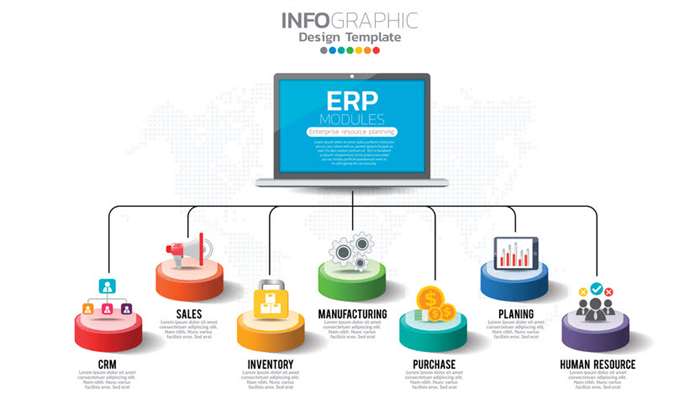Continuous Integration and Continuous Delivery form the backbone of the product delivery lifecycle. A well tuned, fault tolerant and scalable CI/CD pipeline is very important to support modern Agile teams. Access to Azure resources Depending on your deployment target, you may need access to Azure resources, such as virtual machines, storage accounts, or app services. You will need to have the appropriate permissions and credentials to access these resources.
- This practice reduces the need for extensive manual testing before deployment and allows teams to react quickly when problems arise.
- It can be further broken down by issues found in testing or staging and issues found in production.
- You will need to have the appropriate permissions and credentials to access these resources.
- However, the responsibility for ensuring new applications and services are monitored properly should be delegated to developers.
- Despite obvious business advantages, a rapid release approach combined with continuous change processes resulting from DevOps principles will in the long run generate new challenges.
- Jenkins is distributed as WAR files, native packages, installers, and Docker images and is available for free download.
Observability for the CI/CD pipelines is the step-child, with a less established practice. Lack of CI/CD observability results in unnecessarily long cycle time, or Lead Time for Changes, which is another crucial metric measuring how much time it takes a commit to get into production. It means your bug fixes, enhancements and new features will be rolled out with delay. Now imagine the frustration of the users waiting for it, of the business that wants to launch it, not to mention the other developers wanting to run their own pipelines and get stuck in the queue. Add to that the unfriendly experience of the Developer on Duty needing to handle failed pipelines on his shift.
Security
To increase your security, consider introducing automated remediations such as revoking access and removing access keys. Use these auditing tools to look over any changes to the pipeline and put in place a strategy to protect pipeline quality, including automatic checks and manual reviews. Putting together a CI/CD pipeline is a multi-step process requiring numerous platforms, toolchains, and services.

If a build fails, the team needs to be notified immediately in order to quickly identify and resolve the problem. SonarQube offers the same functionality with 27 programming languages available. It integrates with most CI/CD tools and ensures continuous code testing for the team. There are three other bundles for companies of different sizes, priced accordingly. Most of the tools present a toolset to track logs and run automated code tests. Docker is widely known for containers, as it’s the most popular tool to build them.
Metrics That Can Be Measured through Your CI Pipelines
You can integrate these APIs in deployment pipelines to verify the behavior of newly deployed instances, and either automatically continue the deployments or roll back according to the health status. Integrating automated service health checks in deployment pipelines is critical for end-to-end deployment automation, which crucially enables deployment frequency to be increased. You don’t want to be overwhelmed with data, so focus only on specific key metrics like build time, test results, deployment frequency, and resource utilization to get the most value out of your monitoring. Build duration or build time measures the time taken to complete the various stages of the automated pipeline. Looking at the time spent at each stage of the process is useful for spotting pain points or bottlenecks that might be slowing down the overall time it takes to get feedback from tests or deploy to live.

This allows organizations to have confidence in their deployments and enables them to deploy changes with less risk, so they can move fast. Continuous integration and continuous deployment (CI/CD) has enabled teams to build and deploy software at a much faster pace. DevOps teams can build, test, and deploy changes to production in a matter of minutes, allowing for extremely rapid release cycles.
Accelerate your pipeline with fact-based feedback loops
Mezmo also integrates with several infrastructure automation tools including Puppet, Chef, Ansible, and SaltStack. These integrations will also collect logs from the tool itself, allowing you to monitor changes to your environment from the Mezmo web app. You can learn more about monitoring SaltStack logs in Mezmo by reading our blog post. Unit tests are small, isolated tests performed on individual application components. They are typically integrated into source code and executed by an automation server during the build process. Frameworks such as JUnit, NUnit, and pytest generate test result reports, but you should also use logging to oversee each step of the testing process.

Keep in mind, however, that making this metric a target can lead to your team focusing more on classifying tickets than on fixing them. Unlike failures, a defect count refers ci/cd monitoring to the number of open tickets in your backlog classified as bugs. It can be further broken down by issues found in testing or staging and issues found in production.
Continuous monitoring and observability for a CI/CD pipeline
Pro-actively resolve issues with real-time monitoring and alerting of pipeline health and performance. What they are forgetting is the process of processes—the holistic delivery pipeline that impacts every release that happens within it. CI/CD pipelines currently lack visibility, making them the most sensitive link in the SDLC, and many organizations have thousands of unmonitored pipelines prone to supply chain attacks.

The first is data or credential theft, with bad actors targeting tokens or environment variables or some other sensitive information within the CI build. The second is altering packages via malicious changes to dependencies in the supply chain. To send your GitHub logs to Mezmo, open the Integrations page and follow the prompts to connect your GitHub account.
CI & Operational metrics
It requires a lot of effort to choose the tools for every stage of a process, integrate them with each other, and customize for your needs. While specific tools for containers or code testing are similar in functions or don’t present many options, middleware for CI/CD and configurations are more complex. It’s an agent-based monitoring tool that uses small software components to monitor objects in your infrastructure.
Just add the orb to your repository’s .circleci/config.yml file and add the necessary elements to your workflows and jobs. Analyze the skillset of your team and decide which members of a team will be working with these tools. As we mentioned, the CI/CD tools will differ in languages available for programming and configuration methods. If your DevOps team is development-dominant, imperative methods are preferred. Codacy is a static analysis tool that runs code checks and helps developers spot style violations, duplications, and other anomalies that impact code security. With 30+ programming languages supported, Codacy is priced at $15 per month, when deployed in the cloud.